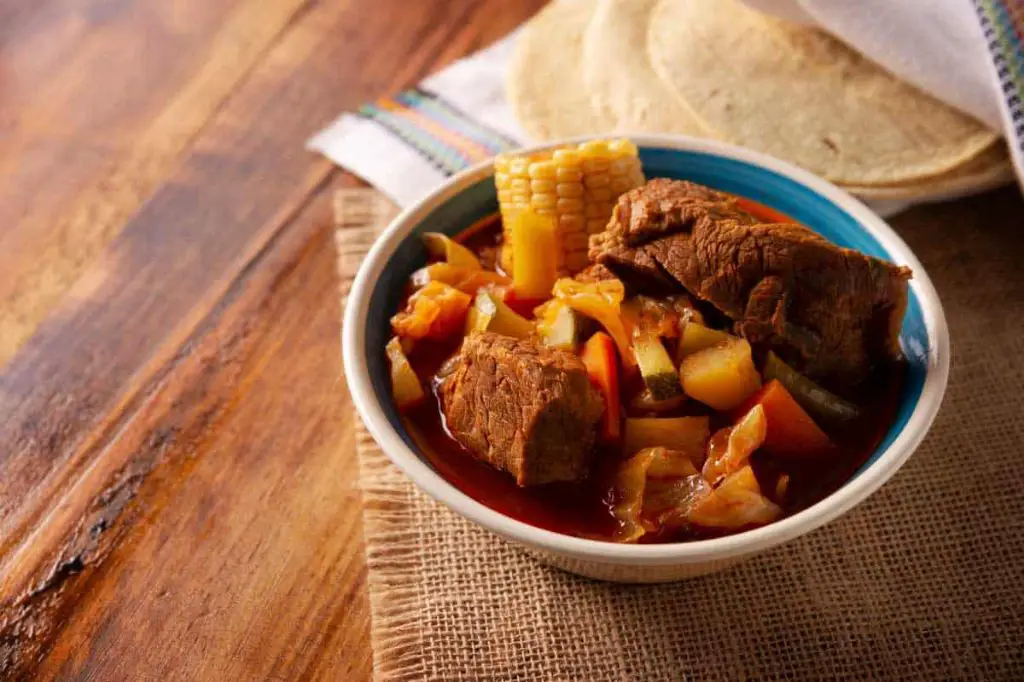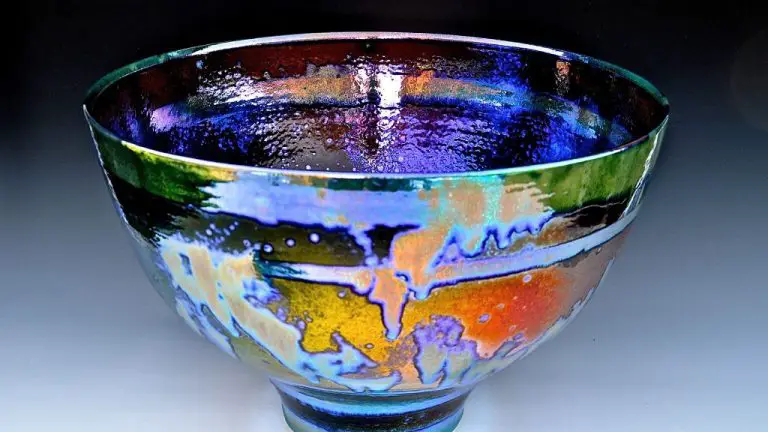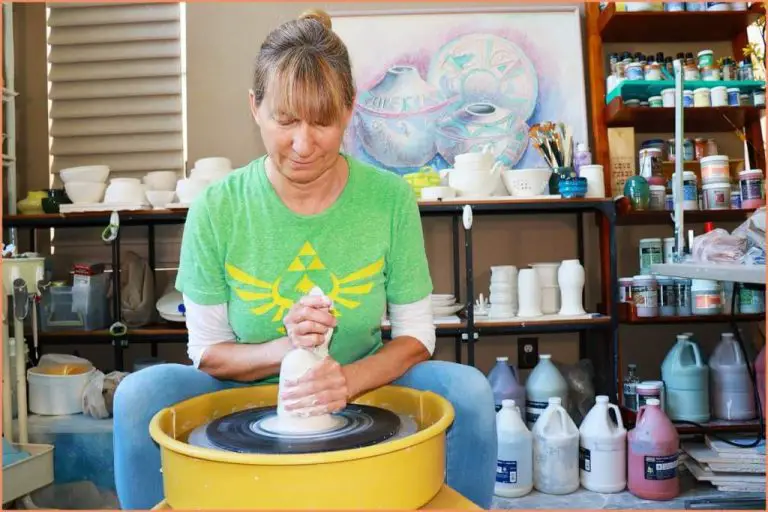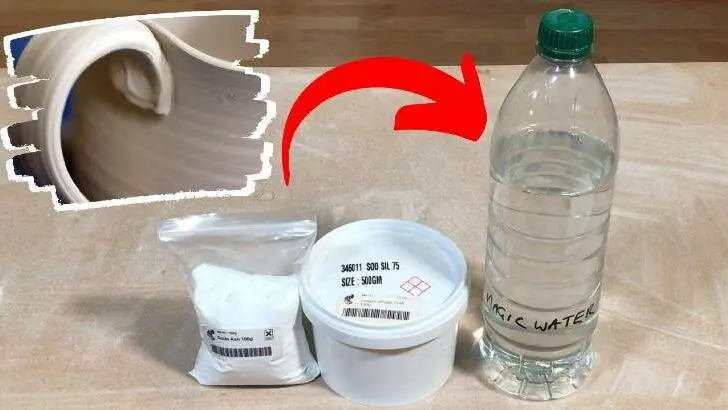Can You Cook In Mexican Clay Pots?
Mexican clay pots, known as ollas de barro in Spanish, have been used for cooking and storage in Mexico since pre-Hispanic times. They are traditionally handmade from natural clay and fired in wood-burning ovens. These clay pots have unique cooking properties and impart subtle earthy flavors to food.
Ollas were essential cooking tools for indigenous cultures like the Aztecs and Mayans. They used these clay vessels to boil, steam, and simmer everything from sauces and stews to tamales and beans over open fires. Today, clay pots are still commonly used in traditional Mexican cooking.
Benefits of Cooking with Clay
Cooking with clay pots is beneficial because it’s a completely natural material that contains no chemicals like other traditional cookware can. Clay pots are made solely from clay and water, creating a porous vessel free of non-stick coatings, metals, or paints that could leach into food (https://www.theindusvalley.in/blogs/blog/top-8-benefits-of-cooking-in-earthenware-vessels).
The porous nature allows steam to escape and moisture to circulate evenly, resulting in more even heating and cooking. Clay pots can maintain the food’s moisture, vitamins, and minerals better than metal pots, adding nutrients like calcium, phosphorus, iron, magnesium, and sulfur into dishes (https://mitticool.com/health-benefits-of-clay-pot-cooking/). The natural clay is also said to give food a distinctly earthy flavor. Many other vessels have their own subtle impacts on flavor.
Overall, clay pots provide a natural, chemical-free cooking method that boosts moisture retention, even heating, steam circulation and the transfer of beneficial minerals into food.
Types of Mexican Clay Pots
There are three main types of Mexican clay pots used for cooking:
Olla
The olla is a basic round pot with a wider bottom and narrower opening at the top. These pots are traditionally used for cooking beans, stews, soups, rice and other one-pot meals. Ollas have a thick rounded bottom which distributes heat evenly. According to Mexican Clay Cookware, ollas have been used in Mexican cooking for generations and are excellent for slow cooking and braising tougher cuts of meat.

Source: https://ancientcookware.com/classic-mexican
Cazuela
The cazuela is similar to the olla but comes with a matching lid. Cazuelas are versatile for cooking meat, veggies, casseroles and baking breads. They come in various sizes from individual serving to family style. The lid allows the cocinero to braise and steam food keeping in moisture and heat. According to Ibarra Imports, cazuelas date back to the pre-Hispanic era and are an essential part of traditional Mexican cooking.
Source: https://ibarraimports.com/collections/red-clay-bean-pot
Comal
The comal is a flat griddle pan traditionally used to cook tortillas, toast spices and nuts, and griddle meats and vegetables. Modern comales are made from clay but traditional ones were made from clay or pressed cornmeal. Comales heat evenly to provide consistent cooking. According to Mexican Clay Cookware, comales have been used for centuries to make authentic homemade tortillas.
Source: https://ancientcookware.com/classic-mexican
Heating Properties
One of the benefits of cooking in traditional Mexican clay pots is their even heating and heat retention capabilities. According to The Myth of Clay Pot Heaters – Do They Work? (Garden Myths), clay is an excellent heat retainer due to its thermal mass. This allows clay pots to absorb heat and then radiate it slowly over time for consistent, even cooking results.
Compared to metal pots which heat up quickly but also cool down rapidly when removed from a heat source, the clay material in Mexican ollas and cazuelas absorbs heat and releases it gradually. This makes clay ideal for slow cooking methods like braising meat or simmering beans and stews. The clay pots retain warmth so the food continues cooking evenly after being removed from the stove or oven.
Additionally, clay pots like bean pots or cazuelas have thicker, heavier bottoms which provide extra heat retention right where it’s needed most for simmering and braising. The clay material and design of traditional Mexican cooking vessels delivers even, gentle heating perfect for many traditional recipes.
What Foods Work Best
Mexican clay pots, often referred to as cazuelas, are especially well-suited for cooking beans, rice, stews, tamales, and eggs. According to The Food & Wine Guide to Clay Pot Cooking, the porous material allows steam to pass through the walls, resulting in evenly cooked food that stays moist without scorching or burning. Cazuelas can be used to cook beans from scratch or simply reheat pre-cooked beans while infusing more flavor. The clay’s heat retention properties allow rice to turn out fluffy with separate, distinct grains. Braised meat or veggie stews cook low and slow in clay pots, releasing juices and creating rich depth of flavor. Tamales steamed in cazuelas develop a wonderfully soft masa exterior while the fillings inside heat through. Even simple fried or scrambled eggs gain creamier, custard-like textures when cooked gently in clay. With the right recipes, Mexican clay pots bring out the best in beans, rice, stews, tamales, and eggs.
Cook Times and Temps
One of the major benefits of cooking in clay pots is the slow, even cooking they provide thanks to the porous material absorbing moisture and distributing heat gently and steadily. Most dishes cooked in clay pots are meant for low heat methods like braising, stewing, or slow roasting over many hours.
Clay pots do exceptionally well with long cook times at 200-250°F, allowing food to become very tender without scorching or burning. For stews or braised meats, cooking covered in the oven or on the stovetop over low heat for 2-3 hours is common. Roasting vegetables and baking casseroles can take 45 minutes up to 2 hours covered in a 275°F oven. The steam created within the clay pot cooks food evenly without the need to stir or flip contents often.
It’s important not to exceed these low temperatures and slower cook times when using clay cookware. The porous material can crack under high heat. Quick-cooking techniques like frying, searing, or broiling are not recommended. Allowing enough time for the clay to heat gradually and disburse steam prevents burning or undercooking the food.
Cleaning and Care
Mexican clay pots are handwash only and should never be put in the dishwasher. To clean, fill your pot with warm water and add a small amount of mild dish soap. Use a soft sponge or cloth to gently scrub the interior and exterior of the pot, taking care not to scour too abrasively as this can damage the seasoning layer. Rinse thoroughly with clean water. Allow to air dry completely before storing or using again. Pots should be fully dried before putting away to prevent moisture damage (source).
If needed, tough stains like salt deposits or algae can be removed by soaking the pot for 30 minutes in an equal parts vinegar and water solution. Rinse and scrub with a soft brush or sponge afterwards. Avoid using harsh chemicals or abrasives when cleaning as these can strip away the clay’s natural patina. With proper care and handwashing, Mexican clay cookware can last for many years.
Tips for Cooking
When cooking with clay pots, there are some useful tips to keep in mind:
If cooking beans, always soak them first. Clay pots retain heat very well, so unsoaked beans can overcook and turn to mush if not presoaked properly. Soak beans for at least 8 hours or up to 24 hours before cooking.
Monitor water levels closely, as clay pots allow evaporation. You may need to add more liquid while cooking. Keep a kettle of hot water nearby to replenish if needed.
Use a diffuser for electric stovetops to prevent uneven heating and cracking. The thick, heavy material of clay pots can create hot spots if placed directly on electric coils.
Allow more time for cooking, as food cooks slower in clay pots. Meats and beans may take 1.5-2 times longer than conventional pots.
Avoid sudden temperature changes to prevent cracking, such as adding cold liquid to a piping hot clay pot. Allow pot to cool slightly before adding room temperature or colder ingredients.
Consider using a heat diffuser when baking clay pots in the oven. Direct high heat can cause cracking or breakage over time.
Common Mistakes
Some common mistakes when cooking with Mexican clay pots include:
Thermal shock – This occurs when the clay pot undergoes rapid temperature change, such as pouring cold liquid into a hot empty pot. Thermal shock can crack or break the pot. To avoid, make sure to preheat the pot gradually and avoid extreme temperature changes. 1
Scratching the surface – Clay pot surfaces are delicate and porous. Scratching or damaging the surface can expose the clay underneath, causing the pot to leak or crack. Avoid using metal utensils and abrasive scrubbers. Wooden spoons and soft sponges are ideal. 2
With gentle care and proper use, Mexican clay pots can last a very long time. Avoiding common mistakes like thermal shock and surface scratches will help ensure your pot brings you many years of delicious meals.
Conclusions
Mexican clay pots, or cazuelas, offer many great benefits for cooking. Their unmatched heat retention allows for slow cooking that intensifies flavors. The unglazed clay imparts a subtle earthy taste. Cazuelas work wonderfully for braising meats, steaming vegetables, cooking beans and grains, baking breads, and more. With proper care, these versatile pots will provide many years of delicious meals.
The best uses for cazuelas are slow-cooked recipes that benefit from concentrated flavor and even heating. Meats become incredibly tender and robust after braising for hours in a clay pot. Beans and whole grains are softened while their taste heightens. The clay also enables caramelization when cooking recipes at a low simmer. While quick-cooking foods like eggs or seafood won’t take advantage of the clay properties, heartier dishes with longer cook times thrive in cazuelas.
With proper seasoning and care, Mexican clay pots unlock an amazing traditional cooking experience. Their unmatched heat distribution and steam retention transforms simple ingredients into complex and satisfying dishes. Cooks who add cazuelas to their kitchen will open up a world of Southwestern authenticity and flavor.




